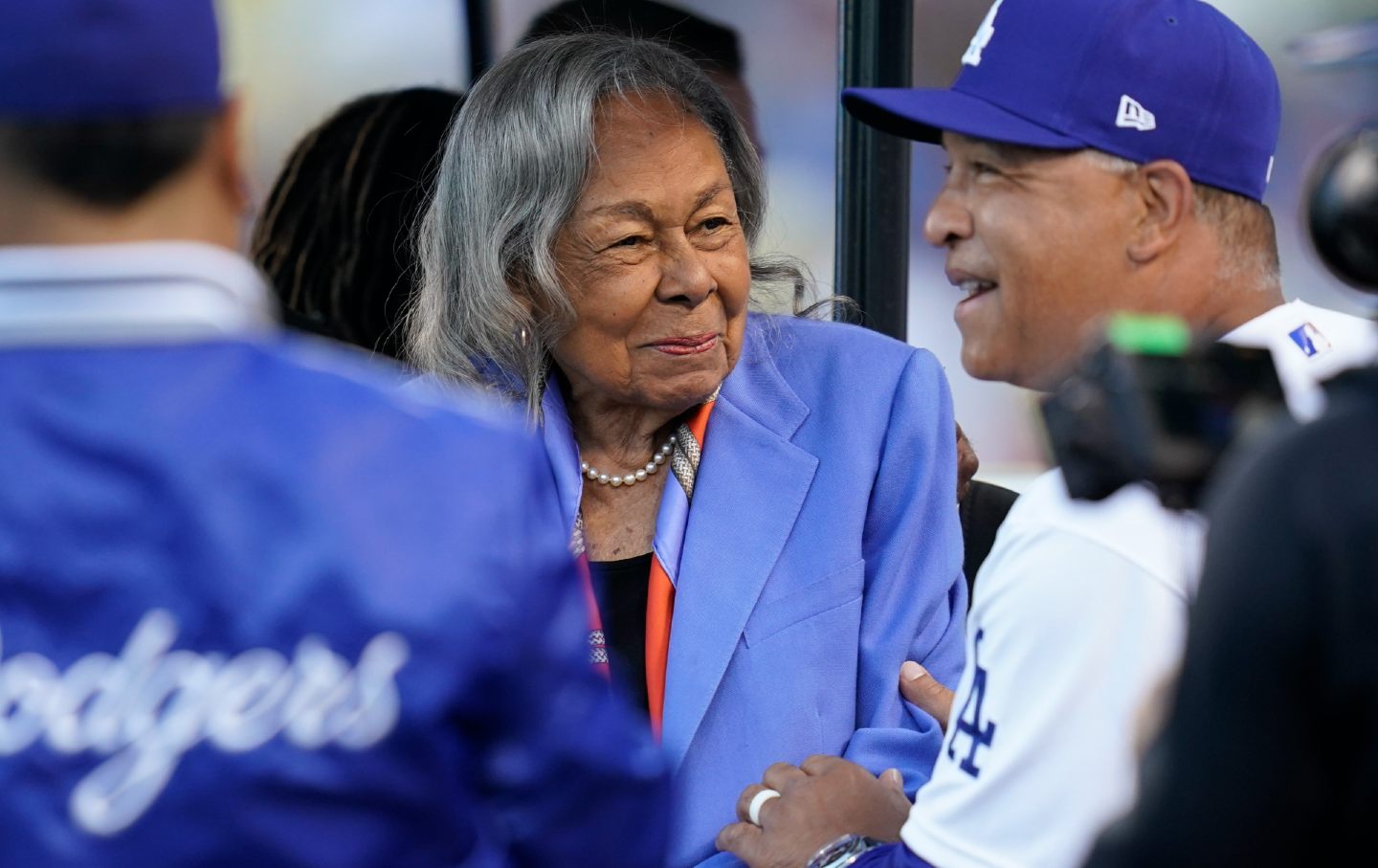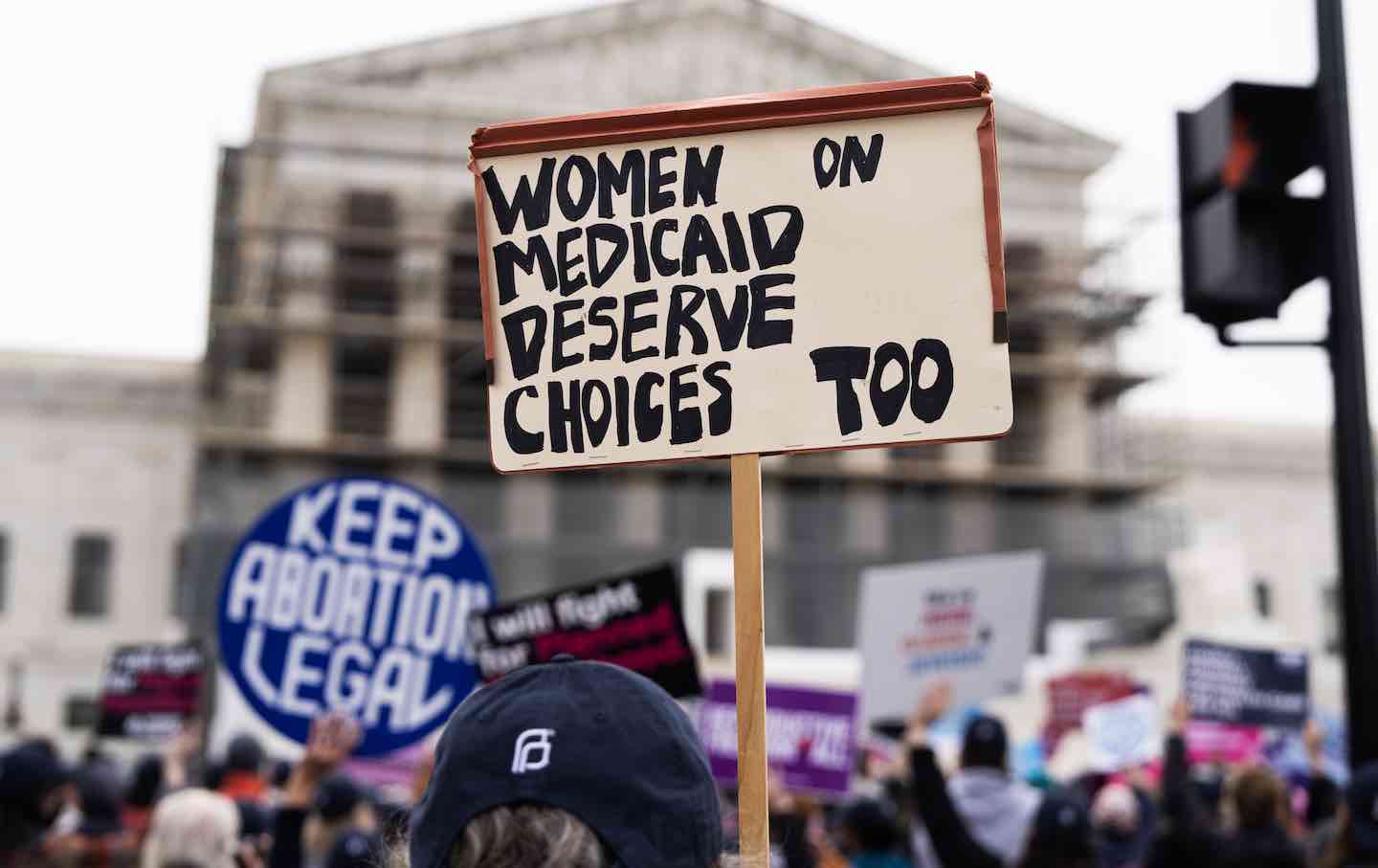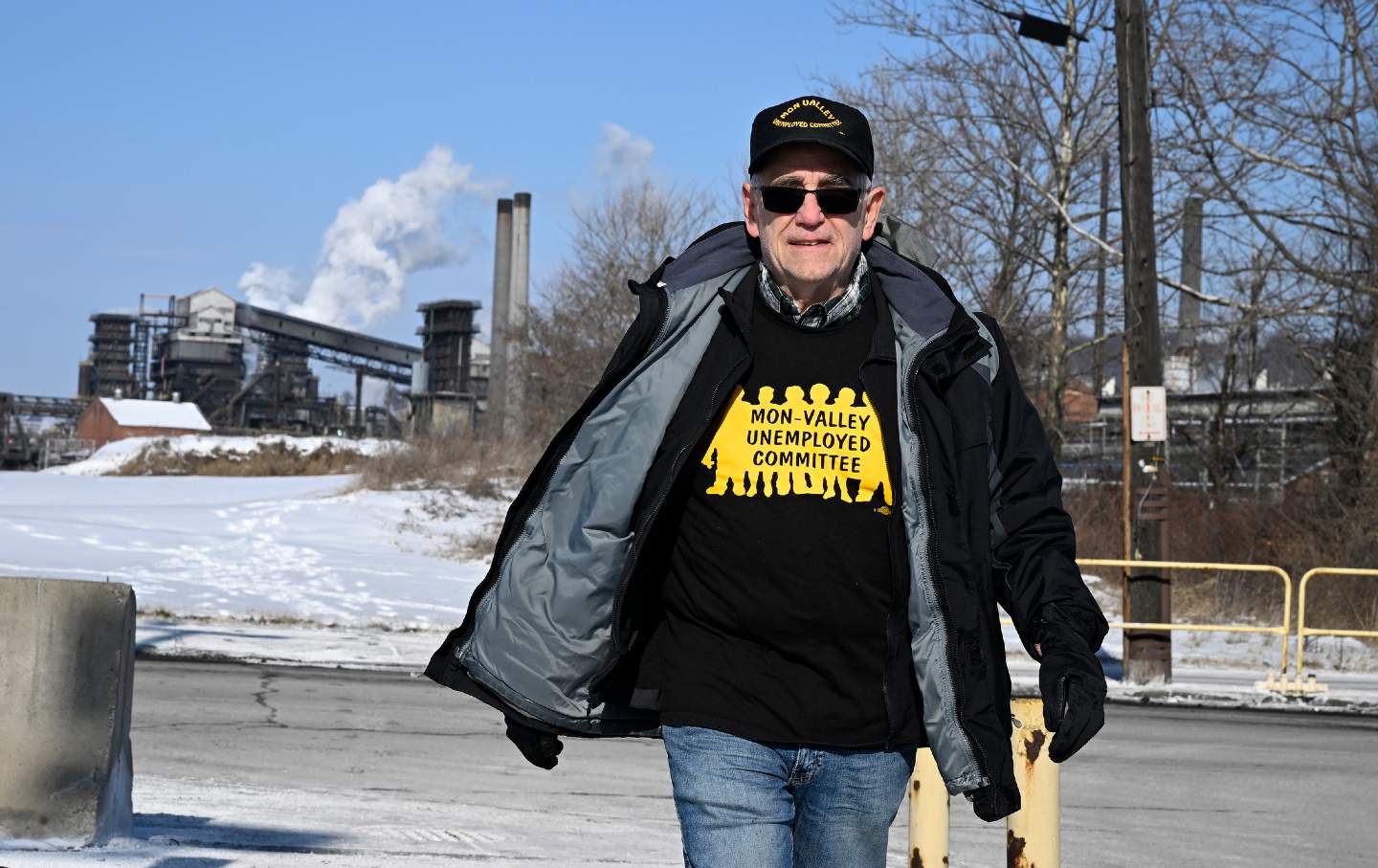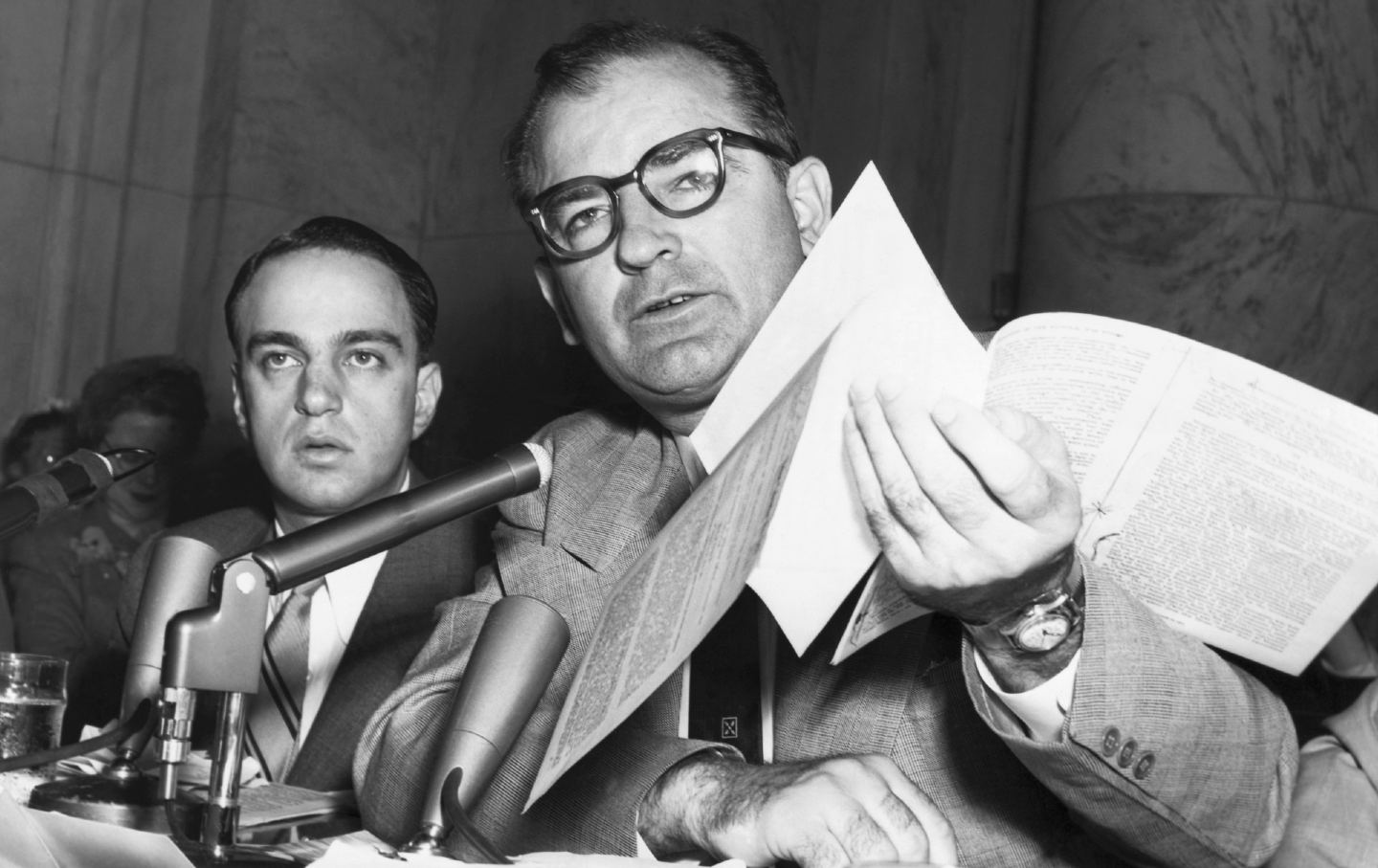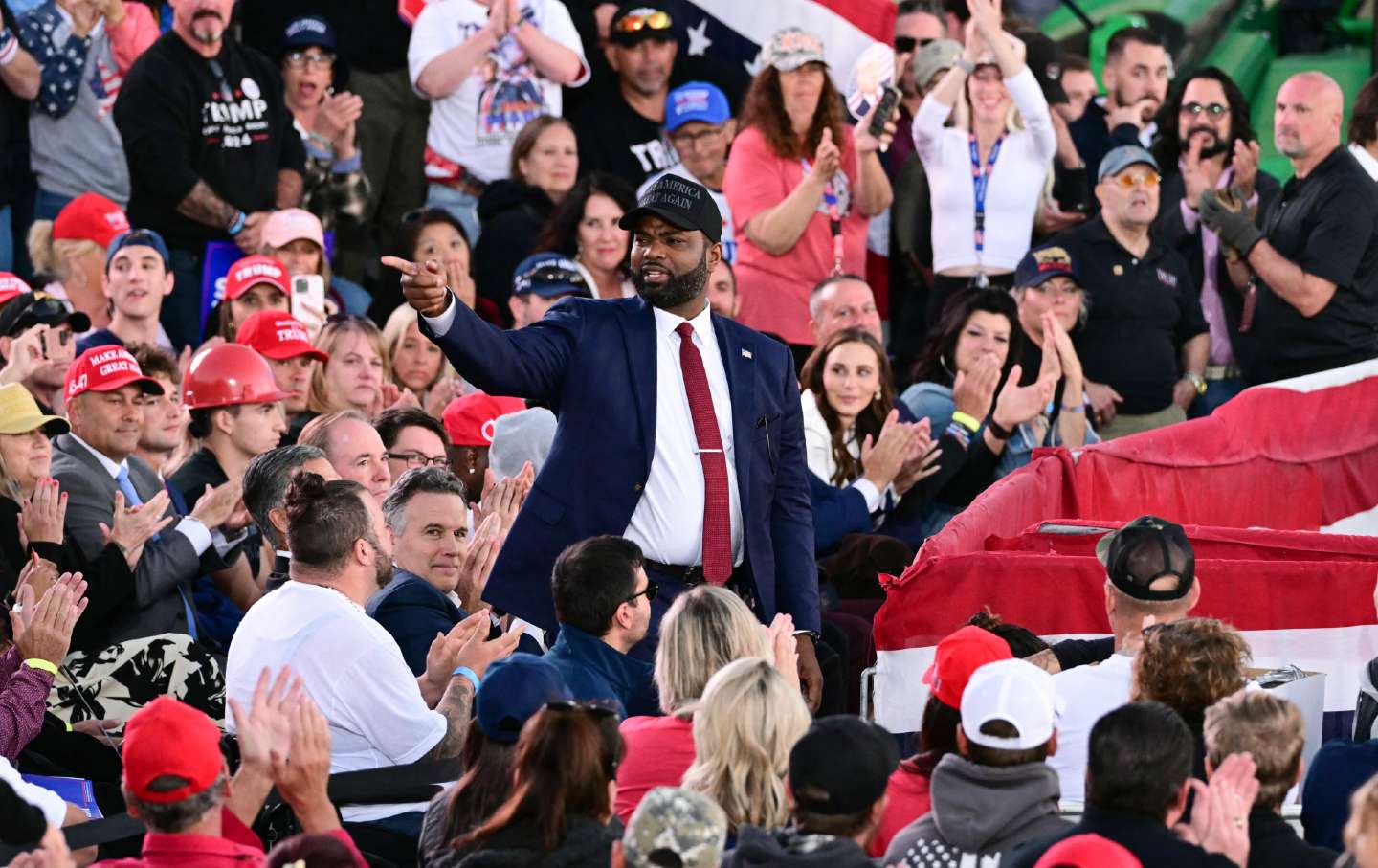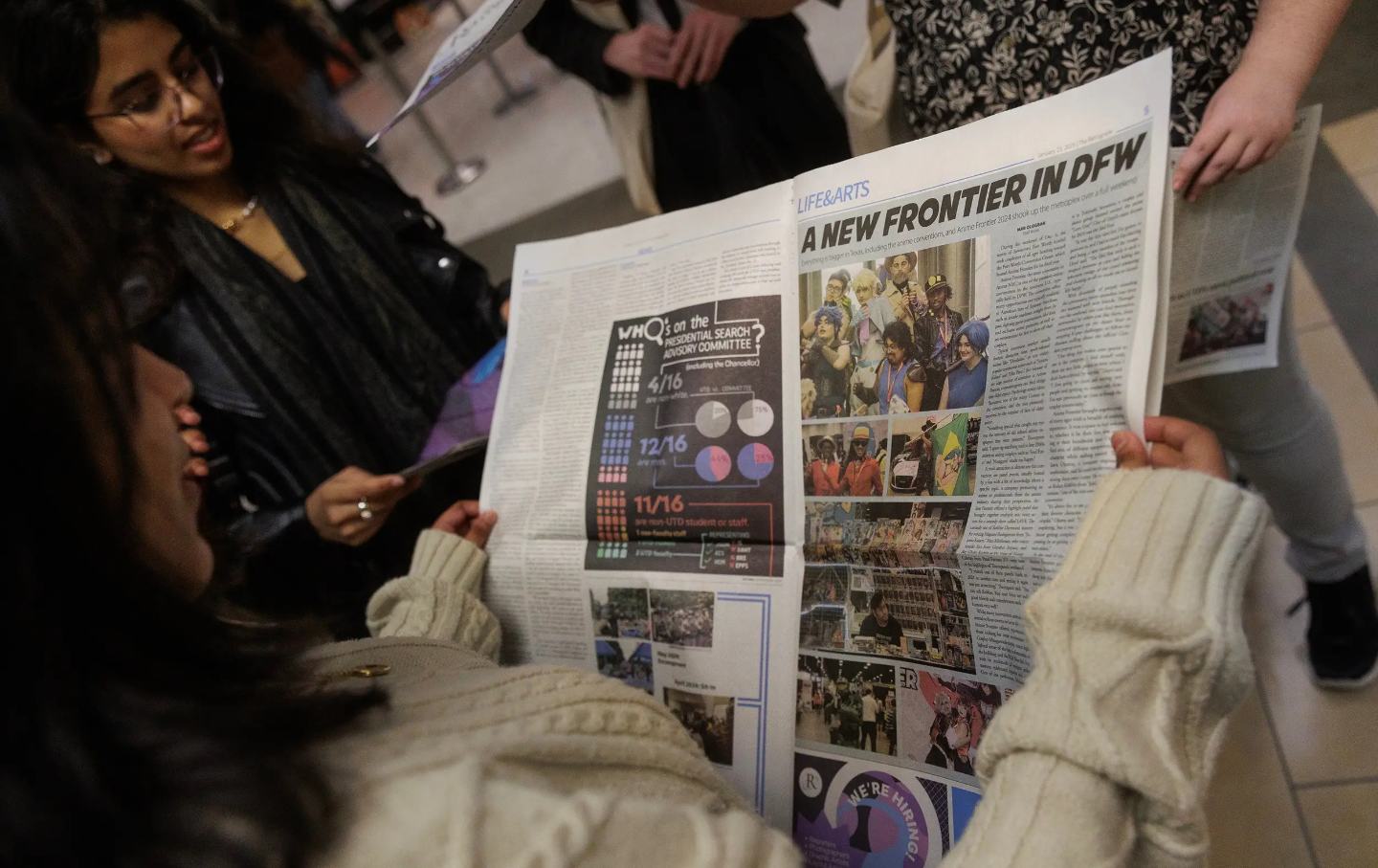Israel Is Still Targeting Palestinian Journalists. Silence Is Not an Option.
Journalists around the world have an urgent duty to stand with their peers in Gaza. Instead, too many are saying nothing.
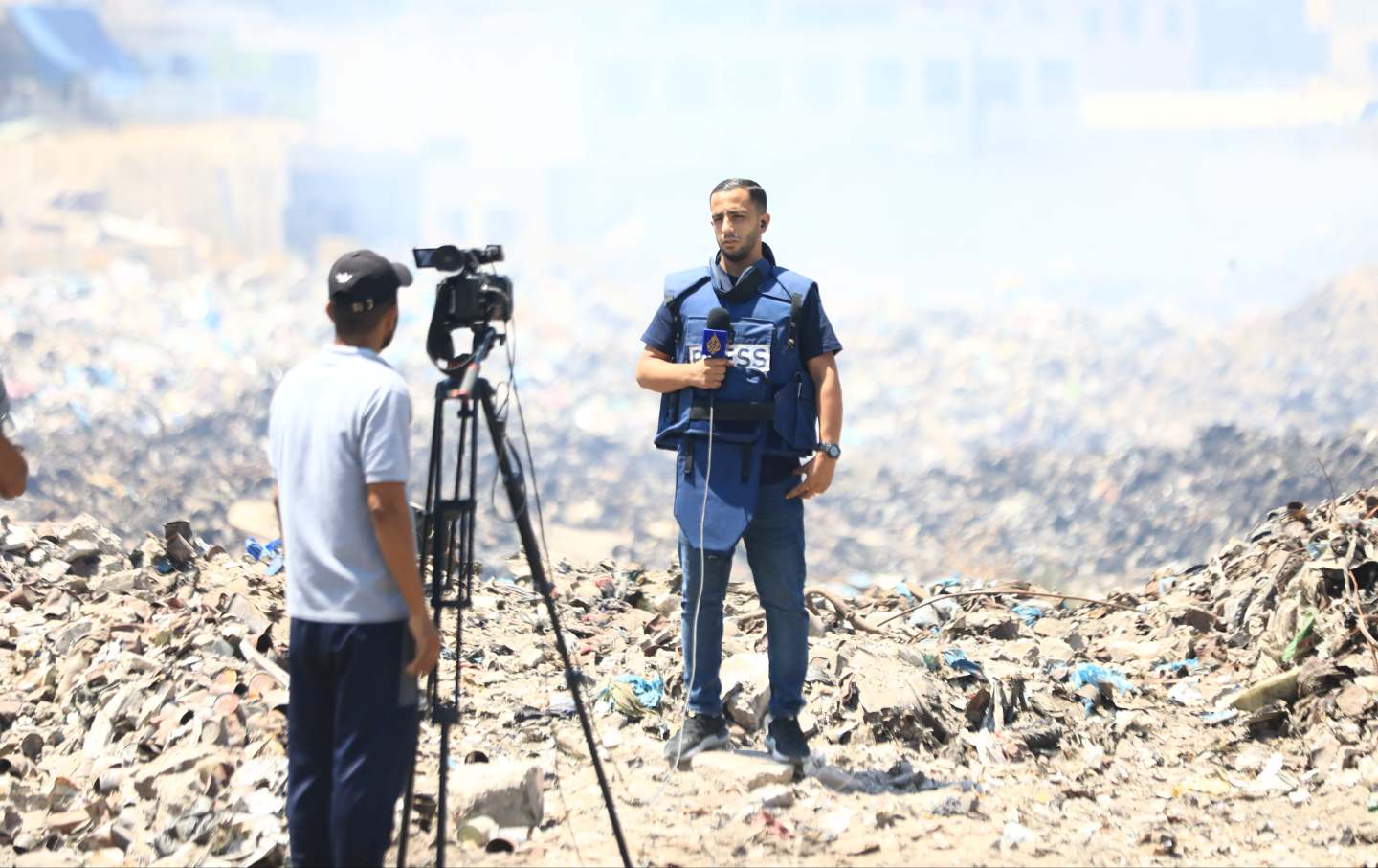
Anas al-Sharif, a Gaza correspondent for Al Jazeera, reports from Gaza City on August 13, 2024.
(Dawoud Abo Alkas / Anadolu via Getty Images)On October 23, the Israeli military accused six Al Jazeera journalists—Anas al-Sharif, Talal Aruki, Alaa Salama, Hossam Shabat, Ismail Farid and Ashraf Saraj—of being “Hamas and [Palestinian] Islamic Jihad terrorists.” The intent was clear: to turn these journalists—all of whom are currently reporting in northern Gaza, where Israel is currently carrying out near-daily massacres—into supposedly legitimate targets for assassination. Israel provided no substantive evidence for these claims, which Al Jazeera called “baseless” and which were condemned by major press freedom organizations and international media outlets.
This was far from the first time during the genocide that the Israeli regime has concocted outrageous accusations to justify war crimes (or, in this case, potential war crimes). But the very public assassination threat against the six journalists was especially chilling—particularly because Israel has been waging a murderous war against reporters in Gaza that has no precedent in modern history.
You might think that such a brazen threat against press freedom would cause outrage at major American media organizations. But the response was muted at best. The New York Times even amplified some of the laughable “evidence” that Israel had produced.
Many of our own peers in the United States have barely acknowledged—if at all—the impact of such allegations, lowering their gaze, and their voices, as the death toll climbs. Since October 7, Israel has killed more than 40,000 Palestinians that we know of, although The Lancet estimated in July that the actual figure exceeds 186,000. Among them, the media government office in Gaza reports that Israel has killed 183 journalists over the last year, or an equivalent of three journalists or more per week.
Enough is enough. Journalists and media workers around the world have the moral duty to speak up against the use of journalism to manufacture consent for war, and to dissent to protect their Palestinian peers in Gaza.
These assassinations are no accident: Israel has turned the “PRESS” vest into a target.
The attacks are relentless. On October 9, four journalists reporting from the Jabalia refugee camp in northern Gaza were targeted by Israeli snipers and quadcopters. The attack, captured by Al Jazeera cameras, critically injured cameraman Fadi Al-Wahidi and killed Al Aqsa TV cameraman Mohammed Al-Tanani, who was shot with a bullet to his neck. The neglected injury paralyzed Al-Wahidi, who is now in a coma. Two days prior, another Al Jazeera cameraman, Ali Al-Attar, was injured by shrapnel from an Israeli air strike on Deir al-Balah, causing a cerebral hemorrhage. Colleagues of both injured journalists have repeatedly begged for the urgent medical evacuation of Al-Attar and Al-Wahidi, whose condition continues to deteriorate.
In Lebanon, Israeli air strikes have killed six journalists, including three in a targeted strike on a media guesthouse in Hasbaya. Israel’s attacks have also injured countless journalists, and in many cases killed their family members.
Meanwhile, Israeli journalist Danny Kushmaro blew up a building in southern Lebanon, pressing the detonator on live TV. His active participation in war crimes in Lebanon—while embedded with an invading Israeli force—was caught on camera. Because of the impunity Israel has been granted by the international community, Kushmaro will face no consequences, and he fears none.
On the other hand, the six reporters from Al Jazeera—a network whose journalists Israel has targeted and assassinated with impunity for years—remain at risk. Al-Sharif, Aruki, Salama, Shabat, Farid, and Saraj are some of the only credible sources reporting on the horrors taking place in northern Gaza. Without their voices, we would not know about the mass graves, the targeted air strikes, the forced death marches, and the Israeli snipers hunting children.
This is not the time for mild, cowardly expressions of concern. Palestinian and Lebanese journalists don’t want their colleagues to engage in mere virtue-signaling: They want to live. And, as they face impending death, our voices, as journalists based in the West, could save them. The choices we make shape public perception and policy, so the truths we tell or omit are more consequential than ever. We must recognize the responsibility we bear in this industry and hold ourselves, and our newsrooms accountable.
By failing to dissent against editorial policies that impose censorship in newsrooms, cover up stories, and use misleading or softened language, Western journalists in many major legacy outlets play a direct role in producing the misinformation that legitimizes these targeted assassinations. The risk of job losses for failing to adhere to the erasure of Palestine is certainly a reality, but Israel’s threat to the future of journalism—by stripping journalists of any protections—is irreversible.
Manufacturing consent for the ethnic cleansing of the Palestinian people occurs through the disregarding of the genocidal intent that has long been made explicit by Israeli political and military figures. It involves mainstream media outlets’ accepting Israeli military spokespeople as legitimate and unbiased sources, going so far as to become the cover for manufactured reports that are used to justify the massacre of Palestinians. Meanwhile, Palestinian reports are dismissed. The deeply racist bias isn’t merely prejudice—it has paved the way for genocide.
The New York Times is a glaring example of this practive, particularly with its infamous, debunked story alleging mass rapes on October 7. The investigation fell apart when sources who were interviewed declared that the newspaper lied. The paper even pulled a podcast episode about the story. The lies had already sunk into the minds of the American public, however. They have never been retracted; indeed, just this morning, a report quoted Times executive editor Joe Khan as saying that the “debate” over the story “is over.”
Politicians have also failed to address the relentless attacks war on Palestinian journalists in Gaza. On October 11, 65 House Democrats signed a letter addressed to President Biden asking him to pressure Israel into providing “unrestricted” access for American and international journalists to enter Gaza “at a time when reliable information is more critical than ever.” More than 70 media and civil society organizations have also urged that access into Gaza be granted, signing an open letter in July. Sadly, this outcry is one year too late. And there is no record of a letter or discussion on the House floor about the protection of journalists already in Gaza. This demonstrates the double standard employed by the US political and media apparatus, which is rallying to give access to journalists abroad, while staying quiet on the assassination of journalists inside Gaza.
While the bias present within major US outlets remains as abhorrent as ever, there are attempts from within to tell the truth. Refusing to lower their gaze, some journalists who work at these conglomerates have been trying—behind the scenes—to gather stories centering Palestinians and to challenge Israeli propaganda.
We recently saw Chris Hayes calling out US complicity in supplying weapons to Israel as he reported about the violent death of Sha’ban al-Dalou, a teenager who was burned alive before the eyes of the world after an Israeli air strike hit a displacement camp by Al-Aqsa Martyrs Hospital. Reporters at NPR were perhaps the first to report about the challenges and restrictions faced by medical missions entering Gaza, including doctors who were turned away because of their Palestinian roots. Reporters and producers at CNN have also attempted to push similar stories out, centering the struggles faced by Palestinian women in Gaza who are seeking reproductive care and raising malnourished babies, because Israel keeps bombing hospitals and blocking aid from entering the Strip.
Popular
“swipe left below to view more authors”Swipe →We know these stories exist because we went looking for them. But this coverage doesn’t absolve such outlets of their failings—CNN, for instance, published false reports parroting the Israeli military’s claim that an Arabic calendar hung at the al-Rantisi Children’s Hospital was a shift schedule for Hamas guards. The channel then deleted the report without an editor’s note. And while CNN’s Sarah Sidner issued a public apology for reporting unverified claims of “beheaded babies,” the channel continued to repeat the trope the very next day. The coverage that exposes Israel’s slaughter of the Palestinians, however minimal or hidden, shows that some journalists are trying to cut through the propaganda. If they can do it, so can others.
There are also growing signs of mobilization within the media. Last week, for instance, more than 830 journalists signed a letter demanding “immediate medical evacuations for Ali Al-Attar, Fadi Al-Wahidi, and all injured journalists; the protection of the journalists who remain; and fair reporting on Gaza and the condition of Palestinian journalists there.”
Palestinians are often treated as “unreliable” by racist Western media. And yet, major outlets—CNN, The New York Times, The Washington Post, and others—have contracted fixers on the ground in Gaza, have licensed photojournalists’ work taken in Gaza, and have relied on freelance reporters across the Strip. To report is, simply, to tell the truth as it is; to convey the story as it is. The truth does not come with a prerequisite of a press credential from a billion-dollar outlet.
Palestinian journalists reporting in Gaza are doing so amid carnage and destruction, exposing horrors that would otherwise remain invisible to the outside world. Journalists there have lost their homes and family members in the bombings. They face dire living conditions, with limited food, water, and electricity due to a complete siege. Meanwhile, restricted access to Gaza and communication blackouts have suppressed the flow of information.
Journalists are not simply sources of information. They are the memory keepers of a people. They are the ones who are driven by curiosity and a profound desire to know the truth. They seek that truth and try to share it with the world. Palestinian journalists in Gaza are documenting one of the most explicit cases of genocide the world has witnessed, despite the target that Israel has painted on their foreheads. When a journalist is assassinated, the stories that they didn’t get a chance to publish—the voices that are not recorded—are stolen as well. Israel’s war on Gaza is not only a land grab, as its leaders have explicitly stated: It is also a theft of invaluable Palestinian memory and history.
Journalists around the globe must remember that journalism is not a ladder: It is a field of stories about people, their joys and their tragedies, the oppressed and their oppressors. Palestinian journalists in Gaza honor this duty. They are the voice of the people, echoing loud enough to shatter Israeli propaganda. But who will be the voice of these journalists, if not us?

